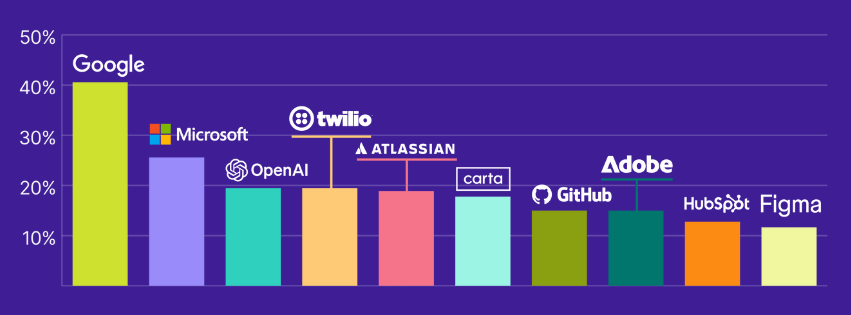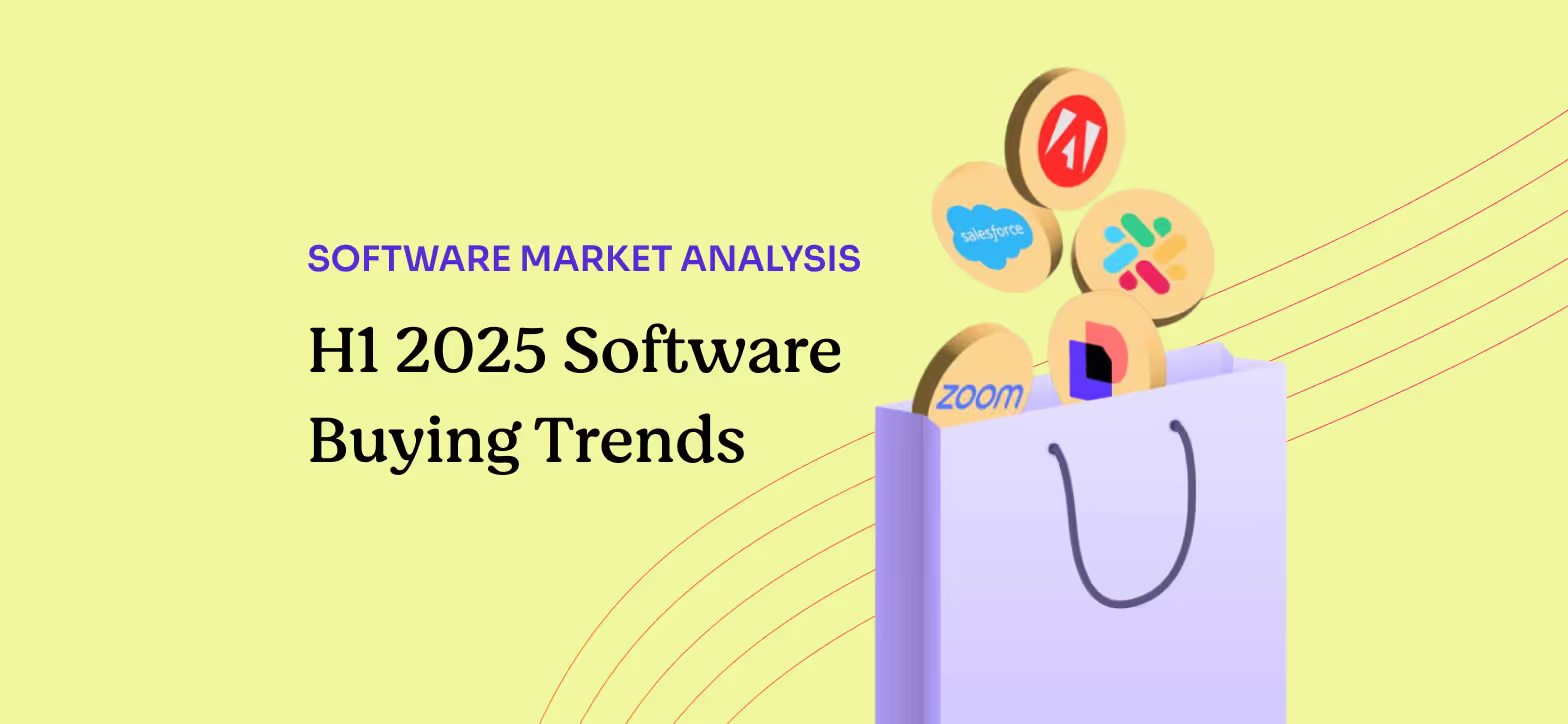Ever signed up for a free trial and forgot to cancel? Months later, you find out you’ve been charged $29.99 a month for a subscription you don't even use.
Now scale that across your entire company. That’s shadow spend (or shadow IT).
Only it’s not $30 - it’s $300k. And it’s not just a forgotten streaming service. It’s AI credits, cloud auto-scaling, and rogue SaaS tools adopted without approvals.
Some of your biggest suppliers are built to bypass procurement. Google drives shadow spend 40%+ of the time across spend data we analyzed. That’s not random, it's by design.
Cloud? Usage-based with zero guardrails. Workspace? Self-serve and frictionless. Gemini? Embedded into tools your team already uses.
And Google’s not alone. HubSpot, Rippling, Deel, Carta can sidestep procurement review with embedded platforms and hazy renewal flows.
You think you’re in control. But the spend that matters most (i.e. the unpredictable, usage-based, decentralized kind) is happening under your radar.
It’s an inflection point for teams who desperately need greater spend visibility and control.

How is Shadow Spend Getting Sneakier to Prevent?
Shadow spend isn't new, but it's accelerating fast and becoming much easier to sneak under your purview.
The shift in vendor go-to-market strategies is part of the reason:
- Usage-based models are becoming the norm: Instead of upfront licensing, more vendors are pricing per API call, per user session, per output generated. That means cost is variable, not fixed - and variance becomes inevitable.
- Freemium and swipe-to-upgrade pricing lowers friction: It’s easier than ever for an employee to get started. They swipe a company credit card, solve a problem, and scale their usage long before procurement or finance ever sees the bill.
- Embedded AI and SaaS tools create decentralized adoption: Platforms like Gemini, Copilot, OpenAI, or Atlassian embed inside the tools your teams already use. They’re invisible, fast-moving, and incredibly difficult to monitor without unified oversight.
Finance teams suddenly find themselves reporting on spend they never approved, tied to tools they don’t understand, billed on cycles that don’t align to forecast models. Procurement leaders are left chasing down retroactive contracts and renegotiating with vendors they should have partnered with from the start.
Not only is this operational friction, it’s strategic risk for the business. Shadow spend distorts the financial picture, weakens purchasing power, and introduces unmanaged liabilities across departments.
Tropic data shows Google drives over 40% of shadow spend across companies. Think about that. One vendor can be responsible for almost half of your blind spots.
Meet the Offenders: Vendors Driving Highest Shadow Spend Risk

You can’t manage what you don’t see. And market leaders represent some of the biggest shadow spend culprits we're seeing across the market.
Let’s break down some of the biggest contributors to variance and shadow spend activity:
- Google: Google Cloud’s usage-based pricing scales automatically, making it easy for teams to spin up projects without tagging or oversight. Workspace and Gemini are often adopted without centralized negotiation, especially as Gemini embeds deeper into productivity tools.
- Microsoft: Azure’s complex pricing and Copilot’s token-based AI consumption make spend unpredictable without close tracking. Many organizations activate Copilot across users before understanding usage-based triggers or overage thresholds.
- Twilio: Engineering teams often adopt Twilio for comms APIs, but costs can spike overnight with product launches or marketing campaigns. Multiple teams running separate accounts compound the challenge.
- OpenAI: Teams experimenting with AI quickly underestimate how fast OpenAI credits get consumed. Usage surges from a single integration can trigger large, unplanned overages.
- Atlassian: Tools like Jira and Confluence are adopted team-by-team, with seats and add-ons added on the fly. Without centralized procurement, companies end up with multiple contracts and inconsistent pricing.
- GitHub: Developers self-serve GitHub orgs, often upgrading to premium plans or adding users without approval. This creates fragmented spend with minimal negotiation leverage.
- Adobe & Figma: Design teams add seats, AI features (like Firefly), or extra storage without coordination. These tools often fly under the radar until renewal costs escalate.
- HubSpot: Contact growth and unlocked features in HubSpot cause spend to rise fast, especially in marketing teams using independent portals. Add-ons like CMS or Ops Hub are often activated without procurement involvement.
- Rippling: Rippling’s modular pricing model means every new function—payroll, benefits, devices—adds to cost. Teams often scale usage before finance gets visibility.
- Deel: Hiring managers use Deel for fast international onboarding, but per-contractor costs and FX fees add up quickly. Procurement is often brought in too late to negotiate terms.
- Carta: Legal and finance teams use Carta to manage equity, but per-entity licensing and auto-renewals quietly expand total cost. Lack of visibility into user activity or seat usage drives waste.
Each of these vendors drive massive value - they're market leaders for a reason. But in the absence of a coordinated purchasing strategy, they can also introduce chaos.
Departments move fast, usage scales unpredictably, and soon you have three teams paying three different rates for the same product - all while Finance tries to reconcile the delta.
This is how companies end up with thousands - sometimes hundreds of thousands - in spend across tools no one owns (or uses much), contracts no one negotiated, and commitments no one is tracking.
Warning Signs To Watch Out For
Shadow spend doesn’t announce itself with flashing lights. It creeps in slowly, line by line, invoice by invoice. But there are patterns you can spot:
- Spend spikes from known vendors without context or prior notice
- Redundant tools with overlapping capabilities
- Vendor charges showing up in Amex or card feeds but not in your ERP
- Lack of owner or renewal dates tied to tools in use
- Teams asking for retroactive PO’s after a charge hits
- Variance patterns tied to usage-based suppliers
If you’re only discovering a tool during a contract renewal - or worse, when the charge hits your credit card - you’re falling behind and need to stop "reacting" to your software portfolio.
4 Ways to Mitigate Shadow Spend
Shadow spend thrives in complexity. That means the solution starts with simplification.
Here are four proven ways to take control:
1. Centralize contract and spend data
Fragmented data = fragmented decisions. Finance and procurement need one source of truth.
That means a system where you can:
- Tie every vendor to a contract
- Track owner, renewal date, spend trends, and pricing terms
- Get proactive alerts before renewal periods
- Link contract clauses to actual spend performance to spot overruns or missed commitments
This isn’t just about compliance. It’s about planning ahead so you can be proactive. When you centralize vendor data, you regain the ability to model spend, forecast risk, and negotiate from strength.
2. Control spending better
Every shadow spend event started as a good intention. An engineer needed a tool. A marketer needed an integration. But intent doesn’t replace process.
You need:
- Clear procurement policies for software/SaaS purchases
- Pre-approved vendor lists for large or strategic spends
- Automated approval workflows that flag unapproved purchases
- Real-time budget checkpoints before a charge can be authorized
Most importantly, these policies need to be frictionless. If the path to compliance is too slow or clunky, people will find a workaround. The best controls make the right path the easiest one to use. A focus on user experience is critical here.
3. Consolidate vendors
Redundancy is a shadow spend accelerant. If three teams are using three different analytics tools with 80% overlap, you’re wasting money and leverage.
Consolidating vendors can:
- Uncover pricing discrepancies
- Create volume-based discount opportunities
- Align vendor strategy to enterprise goals
- Eliminate shadow tools by rolling individual contracts into enterprise-wide deals
Start by mapping which teams are using similar tools. Then work with procurement to identify where consolidation is viable without disrupting daily workflows.
4. Align your teams
You know what fills the gaps if Finance and Procurement are not sharing context and insights between actual and contracted spend? Shadow spend.
Cross-functional alignment means:
- Monthly spend reviews of vendor trends between Finance, Procurement, IT, and other department heads or contract owners where necessary
- Shared dashboards for renewals, overages, and usage alerts
- Education across departments on the cost of rogue tools
- Executive support to make shared ownership of spend governance a priority
You’re trying to empower the business with better data, better systems, and better guardrails.
Take Back Control
Every card swipe that skips procurement is a forecasting blind spot, a compliance gap, and a missed negotiation to save on pricing.
Shadow spend is no longer edge case behavior. It’s mainstream. Google Cloud now drives over 40% of shadow spend across companies we analyze. Copilot seats are multiplying. OpenAI tokens are burning. And most of it never touches a contract.
The companies that win are not just the ones who trim waste, but the ones maximize spend visibility and build systems where finance, procurement, and IT can proactively monitor and shape spend upstream.
Related blogs
Discover why hundreds of companies choose Tropic to gain visibility and control of their spend.







.avif)